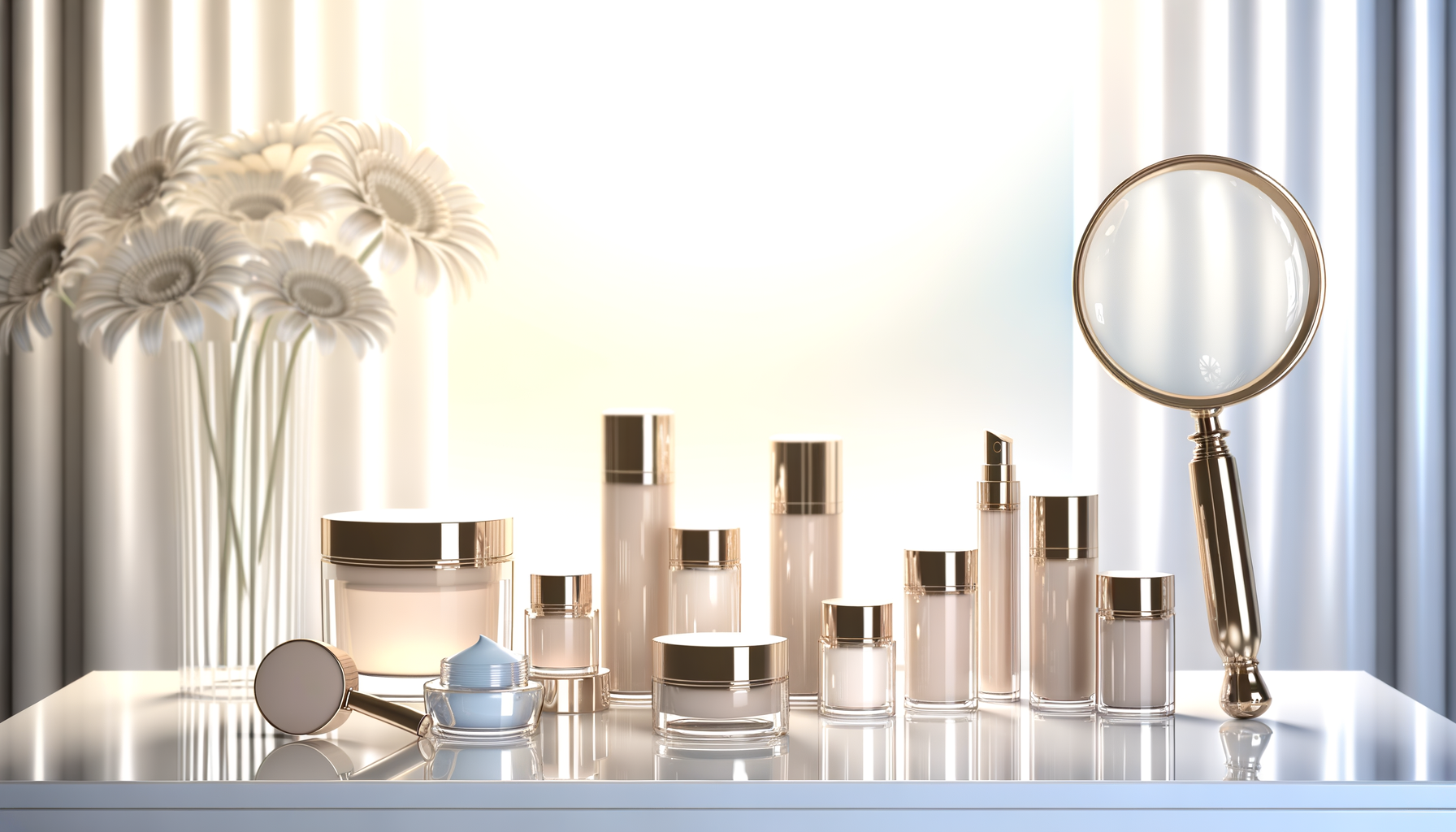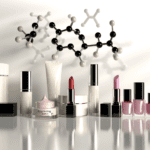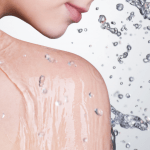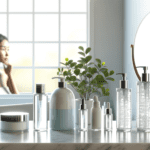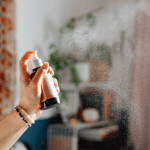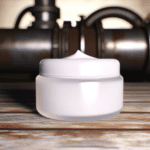Introduction to Benzene and Cosmetics
Understanding Benzene
Benzene is a well-known industrial chemical that occurs naturally in the environment and is also produced by human activities. It is a colorless, flammable liquid with a sweet odor, and it is used in the manufacture of numerous products, including plastics, resins, synthetic fibers, rubber lubricants, dyes, detergents, drugs, and pesticides. However, benzene is also a known carcinogen, which means it has the potential to cause cancer, particularly leukemia, in humans.
Prevalence of Benzene in Cosmetics
The presence of benzene in cosmetics is a significant concern due to its toxicological profile. While not intentionally added to cosmetics, benzene can be found as a contaminant in a variety of cosmetic products, including rinse-off, leave-on, and make-up categories. This can occur due to the use of benzene-containing solvents in the manufacturing process or through the presence of benzene as an impurity in raw materials. The prevalence of benzene in these products, even at low levels, raises questions about the long-term effects of repeated exposure through daily use.
Regulatory Perspective on Benzene
Regulatory agencies have established limits on the concentration of benzene permissible in consumer products to mitigate its harmful effects. For instance, the European Union’s Regulation (EC) No. 1223/2009 on cosmetic products stipulates that all ingredients used in cosmetics must meet certain safety requirements, and the use of substances like benzene is allowed only within specific concentration limits. Despite these regulations, the potential for long-term health effects and the occurrence of the “cocktail effect” from using multiple products containing benzene remains a concern.
Purpose of the Article
The purpose of this article is to shed light on the wellness truth behind the presence of benzene in cosmetics. It aims to inform consumers about the potential health implications of benzene exposure, how to identify benzene in cosmetic products, and the science behind benzene-free alternatives. Additionally, the article will discuss lifestyle changes to reduce exposure, navigate health and aging concerns related to benzene, and empower consumers to make informed choices for their wellness.

Popular Read: Endocrine Disruptors in Skincare: What You Need to Know
Health Implications of Benzene Exposure
Short-term and Long-term Effects
Benzene, a known carcinogen, poses significant health risks upon exposure. Short-term effects of benzene exposure can include dizziness, headaches, tremors, confusion, and unconsciousness. These symptoms often result from inhalation of high concentrations of benzene, such as in industrial settings or in environments with poor ventilation. Long-term exposure, even at lower levels, can lead to more severe health issues. Chronic exposure to benzene has been linked to blood disorders, including anemia and leukemia, as well as immune system dysfunction. The insidious nature of these conditions often means they can develop unnoticed over time, making early detection and prevention crucial.
Benzene and Hormonal Imbalance
Benzene exposure has also been associated with hormonal imbalances. It can disrupt the endocrine system, which regulates hormones responsible for various bodily functions. This disruption can lead to reproductive health issues, thyroid problems, and metabolic disorders. The presence of benzene in cosmetics, often hidden under the term “fragrance,” raises concerns about daily, low-level exposure and its cumulative effect on hormonal health.
Risks of Cancer and Benzene
The link between benzene and cancer is well-established. Benzene is classified as a Group 1 carcinogen by the International Agency for Research on Cancer (IARC), indicating that there is sufficient evidence of its carcinogenicity in humans. Exposure to benzene can increase the risk of various types of leukemia, including acute myeloid leukemia (AML), acute lymphocytic leukemia (ALL), chronic lymphocytic leukemia (CLL), and multiple myeloma. Non-Hodgkin lymphoma has also been associated with benzene exposure. The risk of developing these cancers is related to the level and duration of exposure, with higher risks associated with persistent, long-term exposure.
Impact on Aging and Wellness
The presence of benzene in cosmetics not only poses immediate health risks but also impacts overall wellness and the aging process. As a toxic substance, benzene can contribute to oxidative stress and inflammation, which are key factors in the aging process. Prolonged exposure may accelerate the appearance of aging signs, such as wrinkles and loss of skin elasticity. Furthermore, the systemic effects of benzene on the body’s organs and systems can compromise general health and vitality, affecting one’s quality of life as they age.
In conclusion, the health implications of benzene exposure range from acute symptoms to serious long-term effects, including cancer and hormonal imbalances. Understanding these risks is essential for consumers to make informed decisions about the cosmetics they use and for manufacturers to prioritize the removal of benzene from their products. As we continue to unveil the wellness truth about benzene in cosmetics, it becomes increasingly clear that the pursuit of beauty should never compromise health and well-being.
Identifying Benzene in Cosmetic Products
Reading Labels and Ingredient Lists
Understanding the composition of cosmetic products is crucial for identifying potential benzene contamination. Benzene is not intentionally added to cosmetics but can be present as a contaminant. Therefore, it is not listed on ingredient labels. Consumers should be vigilant about ingredients that may degrade into benzene, such as benzoyl peroxide, especially when exposed to heat. It is also important to recognize that terms like “naturally derived,” “nontoxic,” and “clean” are marketing terms and do not guarantee the absence of harmful substances like benzene.
Hidden Sources of Benzene
Benzene can be introduced into cosmetics through contaminated raw materials or during the manufacturing process. For instance, benzoyl peroxide in acne treatments can decompose into benzene at high temperatures. Similarly, propellants like isobutane in spray sunscreens and dry shampoos may contain benzene as an impurity. Consumers should be aware of these hidden sources and consider the conditions under which they store their cosmetic products to minimize the risk of benzene formation.
Understanding Product Safety Standards
The FDA has set a limit of 2 parts per million (ppm) for benzene in products, but this does not guarantee safety, as some products have been found with levels exceeding this limit. It is essential to understand that safety standards are based on what is considered “acceptable risk” and may not reflect individual sensitivities or cumulative exposures from multiple products. Therefore, consumers should not solely rely on regulatory benchmarks but also seek out additional information and safer alternatives.
Tools and Resources for Consumers
Several tools and resources can help consumers identify products with potential benzene contamination. Independent laboratories like Valisure provide reports on benzene levels in various products. Additionally, databases such as the Environmental Working Group’s (EWG) Skin Deep database rate products based on their ingredients’ safety. Consumers can also reach out to manufacturers for information on product testing and quality assurance practices. Staying informed and utilizing these resources can empower consumers to make safer choices in their cosmetic purchases.
The Science Behind Benzene-Free Cosmetics
Formulation Challenges and Solutions
The discovery of benzene in cosmetics has posed significant challenges for product formulators. Benzene, a known carcinogen, can inadvertently contaminate cosmetics through raw materials or during the manufacturing process. The challenge lies in ensuring that each ingredient and the final product are free from benzene, even in trace amounts. Solutions to this issue include rigorous testing of raw materials, improved purification processes, and the development of alternative synthetic pathways that do not produce benzene as a byproduct. Additionally, manufacturers are encouraged to conduct batch-level quality assurance and to collaborate with third-party laboratories for independent verification of product safety.
Natural and Organic Alternatives
Consumers increasingly demand natural and organic alternatives to conventional cosmetics, partly due to concerns over harmful chemicals like benzene. Natural and organic products often use plant-based ingredients, essential oils, and minerals that are less likely to contain benzene. However, it is crucial to note that “natural” does not automatically mean benzene-free. Therefore, even these products require thorough testing to ensure they meet safety standards. Moreover, the term “organic” refers to how ingredients are grown and processed, so vigilance is still necessary to prevent contamination during formulation and packaging.
The Role of Preservatives in Cosmetics
Preservatives are essential in cosmetics to prevent microbial growth and product degradation. However, the quest for benzene-free products has led to a reevaluation of commonly used preservatives. Some preservatives are derived from benzene-containing compounds, which can lead to contamination. The industry is exploring alternative preservatives that offer the same efficacy without the risk of benzene formation. These alternatives include naturally derived substances and innovative synthetic compounds designed to be safe and effective while maintaining product integrity.
Innovations in Benzene-Free Products
In response to the benzene contamination issue, the cosmetic industry has seen a surge in innovation. New technologies are being developed to detect and measure trace levels of benzene, ensuring that products meet the strictest safety guidelines. Additionally, companies are investing in research to create benzene-free formulations, including patented methods for stabilizing ingredients that historically posed a risk of benzene contamination. These innovations not only enhance product safety but also demonstrate the industry’s commitment to consumer health and regulatory compliance.
In conclusion, the push for benzene-free cosmetics has led to significant advancements in product formulation, testing, and the use of natural alternatives. While challenges remain, the industry’s proactive approach and the development of innovative solutions are paving the way for safer, healthier cosmetic products.
By the way, something for you, a little gift!!!
I am just in the middle of publishing my book. It’s about How women can balance their hormones. One part is about food and diet, of course.
Follow this link and enter your email.
I will send you this part of the book for free once the book is published. It has many concrete, practical tips and recipes and will help you feel better during menopause or times of Big hormonal fluctuations.
Annette, Damiva Lead for Health & Wellness

Lifestyle Changes for Reducing Exposure
Adopting a Chemical-Free Lifestyle
Transitioning to a chemical-free lifestyle begins with awareness and a commitment to making healthier choices for our bodies and the environment. It involves scrutinizing the products we use daily, from personal care items to household cleaners, and opting for alternatives that are free from harmful chemicals. This shift doesn’t have to happen overnight; it can be a gradual process of replacing products as they run out with safer, non-toxic options. By doing so, we reduce our cumulative exposure to potentially hazardous substances like benzene, which can have significant health implications over time.
Detoxification Methods and Practices
Detoxification is a natural process by which our bodies eliminate toxins. To support this process, we can engage in practices that enhance our body’s ability to detoxify. These include staying hydrated, consuming a diet rich in antioxidants and fiber, exercising regularly, and using saunas or steam baths. Additionally, certain supplements and herbs are known to support liver function, a key organ in detoxification. It’s important to consult with a healthcare professional before starting any detox regimen.
Holistic Approaches to Beauty and Wellness
Holistic beauty and wellness go beyond the surface, focusing on the interconnectedness of the mind, body, and spirit. This approach encourages practices that promote overall well-being, such as mindfulness, yoga, and adequate sleep, which can help the body better manage and eliminate toxins. Embracing a holistic lifestyle also means choosing beauty products that are not only safe for the skin but also beneficial for overall health, thereby avoiding exposure to benzene and other harmful chemicals.
Building a Safe and Natural Skincare Routine
Creating a safe and natural skincare routine is pivotal in reducing exposure to benzene and other toxic chemicals. Start by reading labels and ingredient lists carefully, looking out for terms like “paraben-free,” “phthalate-free,” and “synthetic fragrance-free.” Opt for products with a shorter, more understandable list of ingredients, and consider using certified organic skincare items. Incorporate simple, multi-use products such as coconut oil, which can serve as a moisturizer, makeup remover, and hair conditioner. Remember, the fewer products you use, the less likely you are to be exposed to potential contaminants.
By making these lifestyle changes, we can significantly reduce our exposure to benzene and other harmful chemicals, leading to a healthier life and a more sustainable world.

Do you have the most commonly used but toxic, disease bringing chemicals in your skin care? Many chemicals in skincare are hormone disruptors and make menopause symptoms worse.
Find out more…
Navigating Health and Aging Concerns
Balancing Hormones Naturally
As we age, our bodies undergo significant hormonal changes that can impact overall wellness. Natural hormone balancing involves lifestyle adjustments and dietary choices that support the body’s endocrine system. Incorporating phytoestrogens from sources like flaxseeds, maintaining a healthy weight, managing stress through mindfulness practices, and ensuring adequate sleep are all natural ways to help balance hormones. Regular physical activity also plays a crucial role in maintaining hormonal equilibrium by reducing insulin levels and stress hormones.
Enhancing Energy and Vitality
Energy levels often decline with age, but certain strategies can help enhance vitality. A balanced diet rich in antioxidants, vitamins, and minerals supports mitochondrial function, the powerhouse of the cell. Hydration is essential, as even mild dehydration can lead to fatigue. Regular physical activity boosts cardiovascular health and increases energy. Additionally, engaging in activities that bring joy and purpose can contribute to a sense of vitality.
Addressing Menopause-Related Skin Changes
Menopause can lead to skin changes such as dryness and loss of elasticity. To address these concerns, a skincare routine that includes gentle cleansing, moisturizing with products containing hyaluronic acid, and protecting the skin from sun damage with broad-spectrum sunscreen is beneficial. Antioxidant-rich creams can combat free radicals, and products with phytoestrogens may help with hormonal skin changes. Staying hydrated and maintaining a diet rich in omega-3 fatty acids also supports skin health.
Support Systems and Communities
As individuals age, support systems and communities become increasingly important for health and well-being. Social connections can reduce the risk of isolation and depression. Engaging in community activities, joining clubs or groups with similar interests, and staying connected with friends and family can provide emotional support. Online communities also offer a platform for sharing experiences and advice, particularly for those with mobility issues.
In conclusion, navigating health and aging concerns involves a holistic approach that includes natural hormone balancing, lifestyle changes to enhance energy and vitality, targeted strategies for menopause-related skin changes, and the cultivation of robust support systems. By addressing these areas, individuals can empower themselves to maintain wellness throughout the aging process.
Do you know the 3 main ways how your body is exposed to harmful chemicals, which affect your hormones, your thyroid, health and beauty?
If not, it may be time to learn about them. It takes about 1-2 minutes.
We have a few suggestions how to avoid these silent health and immune system killers in our new guide.
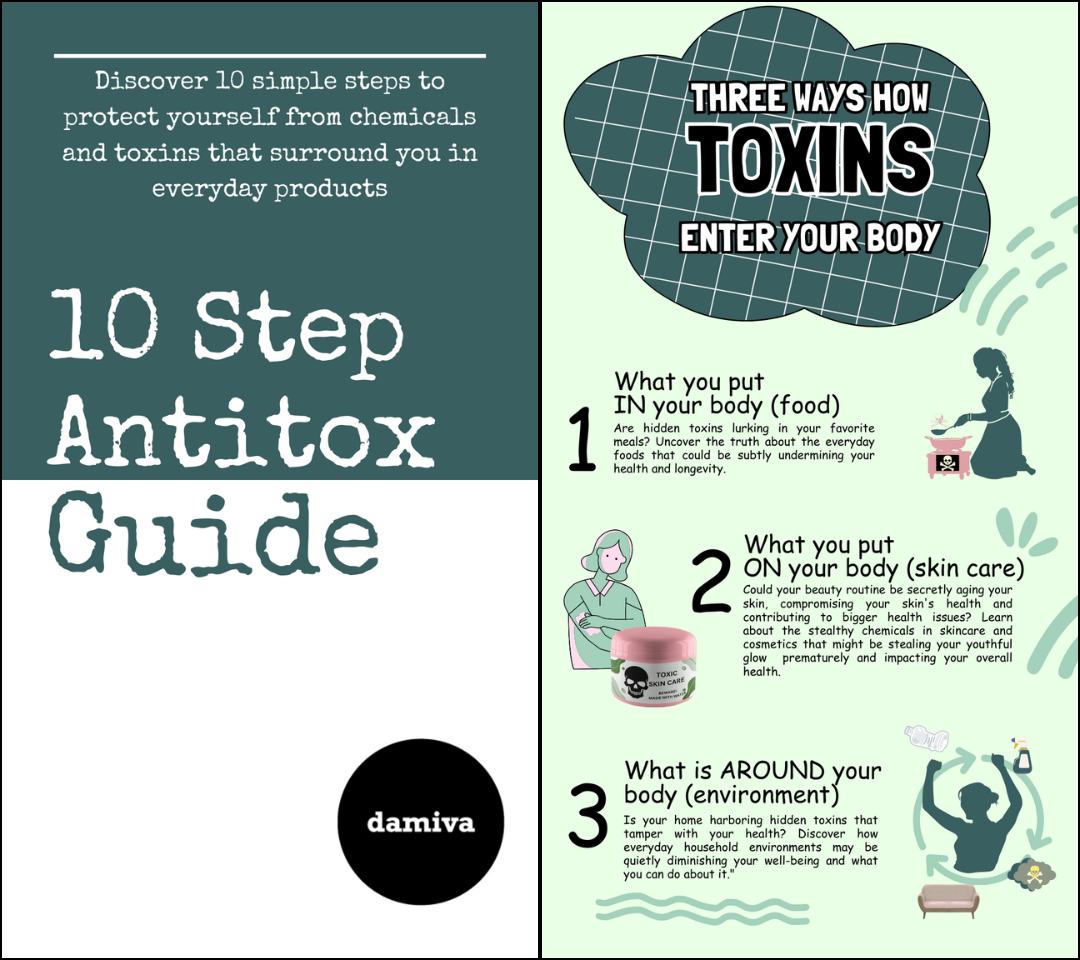
Conclusion: Empowering Choices for Wellness
Summarizing Key Takeaways
In our journey to unveil the wellness truth about benzene in cosmetics, we have explored its prevalence, health implications, and the science behind safer alternatives. We’ve learned that benzene, a known carcinogen, can be found in certain cosmetic products, potentially leading to short-term and long-term health effects, including hormonal imbalances and increased cancer risks. Moreover, we’ve discussed the importance of identifying benzene in products, understanding labels, and recognizing hidden sources.
Making Informed Decisions
Armed with knowledge, consumers can make empowered choices regarding their cosmetic purchases. It is crucial to read labels carefully, seek out benzene-free products, and opt for brands that prioritize consumer safety. By choosing products with transparent ingredient lists and safety standards, individuals can significantly reduce their exposure to harmful chemicals.
Advocating for Transparency and Safety
As consumers, we hold the power to demand greater transparency and safety in the cosmetics industry. Advocacy for stricter regulations and third-party testing is essential to ensure that products on the market are free from harmful contaminants like benzene. Supporting organizations and companies that are committed to clean, safe cosmetics can drive industry-wide change and lead to healthier options for everyone.
Continued Education and Awareness
Staying informed is an ongoing process. As new research emerges and industry practices evolve, it is important to remain vigilant and educated about the products we use. Resources such as the Environmental Working Group (EWG) provide valuable information on product safety. Additionally, engaging with health and wellness communities can offer support and further insights into leading a toxin-free lifestyle.
In conclusion, the path to wellness involves making informed decisions, advocating for transparency, and committing to continued education. By taking these steps, we can protect our health, contribute to a safer industry, and enjoy a higher quality of life. Let us embrace this empowerment, making choices that align with our wellness goals and advocating for a future where beauty and health go hand in hand.
